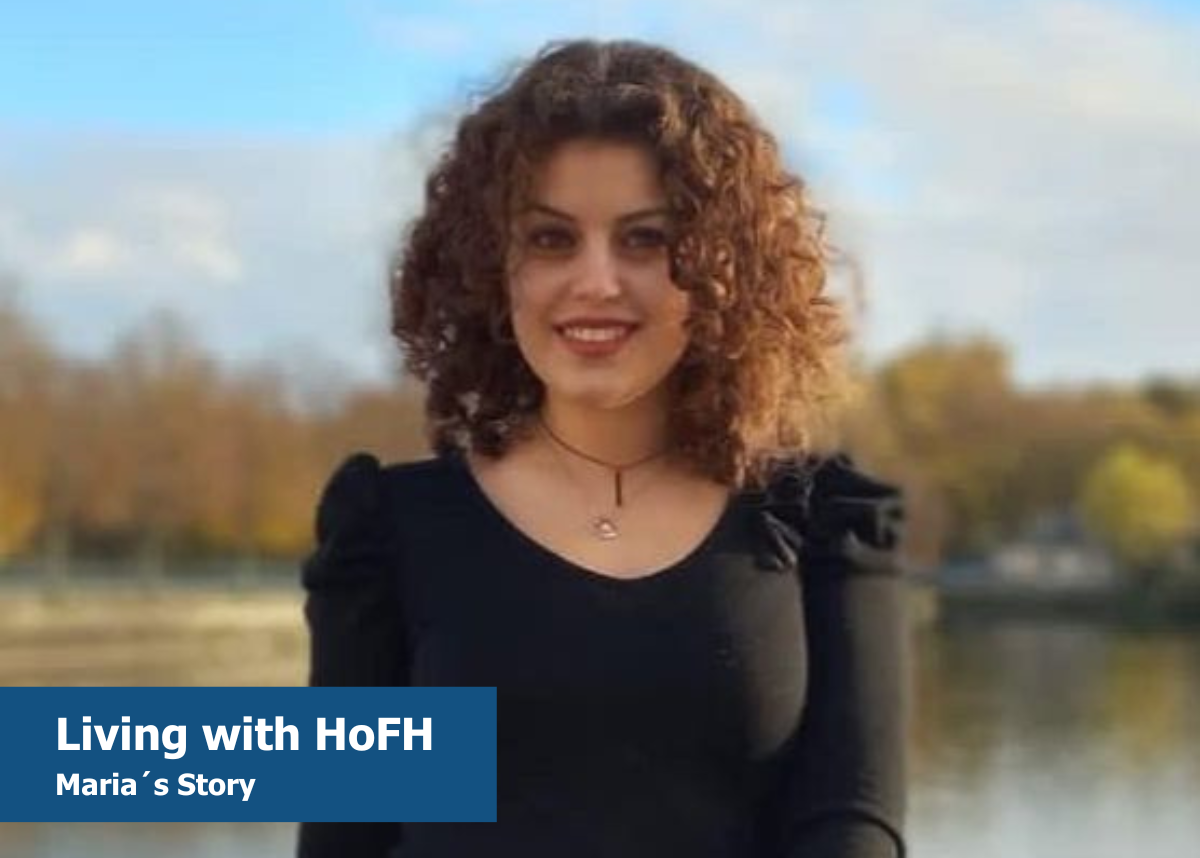
A Story of Resilience, Education, and Advocacy
My name is Maria Nassif, I’m 30 years old, Lebanese living in France.
I got diagnosed with HoFH when I was 3 years old when xanthomas started showing up on various parts of my body - elbows, wrists, knees, you name it. I have a very high LDL level compared to the normal. Instead of the typical 200 mg/dL, mine clocked in at 600 mg/dL. When I was 6 years old, I started taking my daily medicines and doing LDL apheresis. But the results after the apheresis showed my LDL-c remained stubbornly high at 400 mg/dL.
Growing up as a child with xanthomas wasn’t easy, especially as a girl. Everyone kept asking me about those orangey deposits that I have. I wasn’t really able to explain. The only thing I could muster was “It’s because I have eaten lots of sugar”. And of course, none of the children understood either, making them feel discomfort. Some of them were even afraid that whatever I had was contagious and refused to be near me, which affected my personality and self-confidence.
This reveals the importance of awareness both at school and at home, especially for children since they have to live with this rare disease from a very young age without really understanding what’s happening inside their bodies and why they find themselves in the hospital every two weeks with needles in their small veins.
As a student who took the science path at school, I started doing my own research and asking more questions about HoFH until I gained a clear idea in my head about what it is all about.
At 15 years old, I underwent my first screenings (echocardiography and Echo/Doppler tests) prescribed by my doctor. And it transformed into a yearly ritual.
Fast forward to when I was 24 years old. Despite the treatments and the yearly check-ups, I had to undergo open-heart surgery for having the two main coronary arteries blocked – the left one by 90% and the right one by 98%.
My older brother, who shares the same life experience (HoFH and having open heart surgery at 24 years old) became very concerned about his little sister. He put all his efforts to help me go to France because he learned that the medical system there is really advanced when it came to our condition. Another appealing point was the extreme care and honesty the medical staff have towards their patients.
In just two years of undergoing LDL apheresis in France, the xanthomas began to shrink and some even disappeared. Even the results after the apheresis were surprisingly very low (50 mg/dL).
Living with HoFH is quite a journey. As a chronic disease patient, I must be more aware of my diet, take my medicines every day and do my yearly checkups. And like every journey, this one comes with a host of challenges. Mine was sports and physical activities. I always loved to do sports - be it hitting the gym, swimming, playing tennis, volleyball, or dancing. As soon as atherosclerosis started to form, my body was getting tired very easily. My doctors advised me to back out from heavy physical activities. It was a shock for me that later led me down a path of depression. But life should move on. I did some more research on sports for people with CVHDs and Yoga and Pilates were the answer. They don’t only help the muscles stay strong but also calm the body. The breathing exercises regulate the heartbeat which is crucial for people like us. Irregular heartbeats can be mistaken for anxiety/panic attacks since they both have the same symptoms: racing heartbeat, difficulty breathing, dizziness, and insomnia. If left untreated, these issues can cause heart attacks further down the road.
Another unpleasant mental, emotional and physical outcome that arises specially for being a woman, is the challenge of having children. When a woman gets pregnant, her heart beats both for herself and her baby. In my case, that would strain my heart and lead to further complications. Second of all, my baby might be affected by FH so they would have to take medications, follow a strict diet and even face cardiovascular and heart complications. I wouldn’t want to subject a child in more misery in a world that is already challenging. Not to mention carrying and holding the baby and sleepless nights that will definitely make my body more tired.
I call it the silent pain. No one can really see what’s happening inside our bodies, the atherosclerosis in our arteries or the strain on our tired hearts. But I know I’m not the only one. That’s why I advocate for FH and HoFH and the treatments.